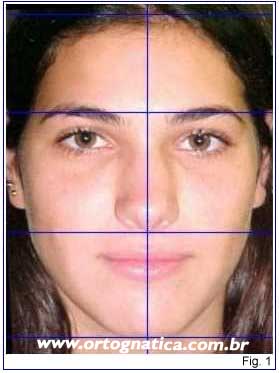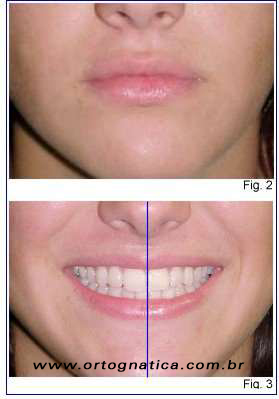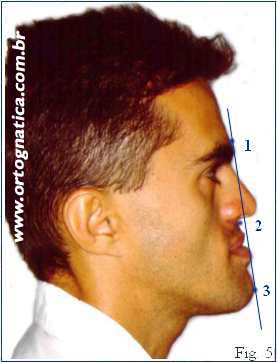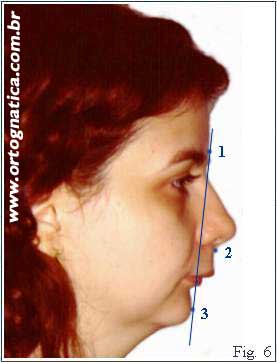Understanding facial harmony?
First we should remember how an harmonic face looks like. Our face is divided into three equal parts (thirds) in a vertical facial analysis. The hairline, the eyebrows, the nasal base, and the chin lines represent the limits of the thirds which have the same proportion (1:1:1) (Fig. 1)

The lips are essential to the facial harmony. The upper lip should touch the lower lip or show a space not bigger than 3 mm when they are in relaxed lip posture (Fig. 2). When the lips are relaxed, the upper incisors are exposed 1 to 2 mm and smiling they should be completely exposed (Fig. 3).The normal bite depends on the correct teeth position into the upper and lower jaw. The correct fitting (occlusion) of the superior and inferior arches depend on the relationship between the canines and the first molars. Usually the dental midline is coincidental to the facial midline, and the inferior teeth fit into the inner side of the superior ones (Fig. 3).

The
facial profile is important as well. Let’s localize some points to
understand an harmonic profile:
Point 1: most anterior portion of the forehead;
Point 2: where the upper lip base meets the nasal base;
Point 3: most anterior chin projection.
Imagine
a straight line passing through points 1 and 3. In an harmonic face, point
2 will be 4 to 5 mm anteriorly projected from this line.
In a prognathic face, point 2 is located to the left of the line (Fig. 5). The bigger the distance between the point and the line the bigger the facial concavity, resembling to one “half-moon”.

In a retrognathic face, point 2 is located too far ahead from that line (Fig. 6), what gives an aspect of exaggerated convexity, resembling to a “bird face”.
